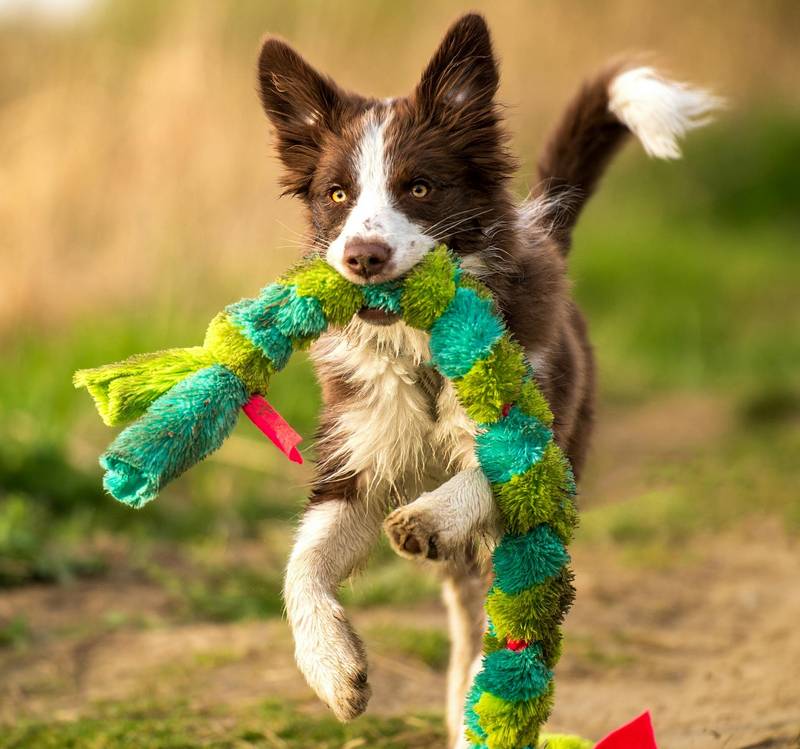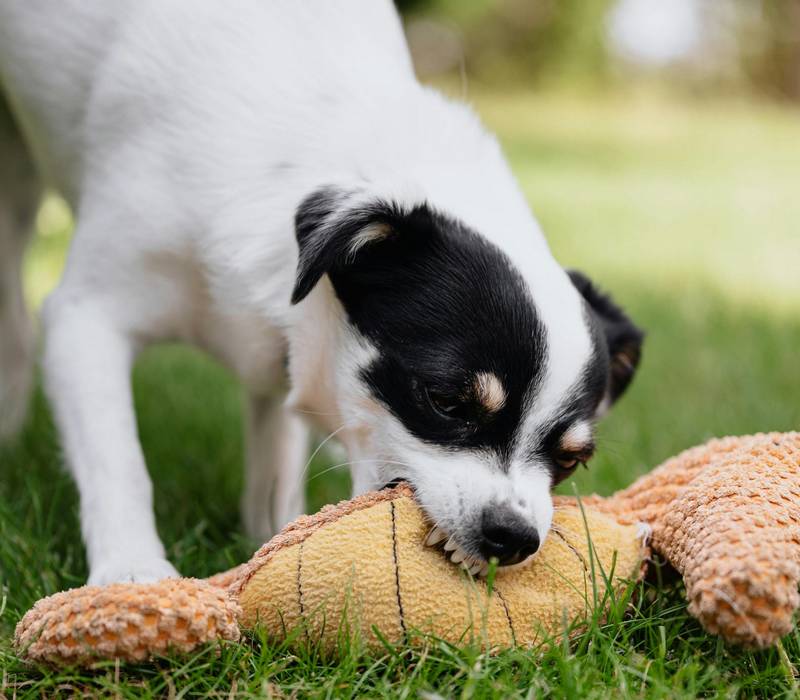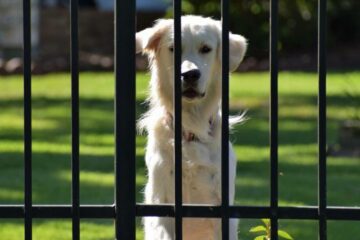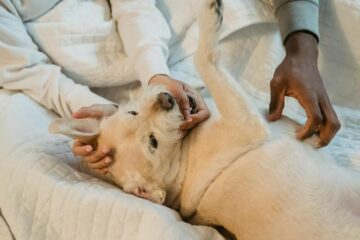Dog Toy Aggression: What’s Happening + How to Stop!
Dealing with toy aggression in your dog or puppy? It’s a scenario many of us have dealt with, especially when our furry friend starts to growl or snap over their favorite toys. And this behavior isn’t just challenging; it can also pose a risk to anyone trying to share or take away the toy. To stop it, we first need to understand what exactly is causing your dog’s toy aggression.
In this article, we’ll cover the common causes of toy aggression in dogs, including why some puppies show possessive behavior towards their toys. Then, we’ll teach you how to stop dog toy aggression, using simple training and positive reinforcement so that they’ll be more cooperative and less possessive. Let’s get started!
Dog Toy Aggression

Dog toy aggression is a form of resource guarding where a dog shows aggressive behavior like growling, snapping, or biting to protect their toys from being taken by others. This behavior can pose challenges in multi-pet households or during interactions with humans, especially children. Addressing toy aggression involves understanding its causes, promoting positive behaviors, and consistent training to ensure a safe environment for everyone involved.
Toy Aggression in Dogs: Common Causes
Toy aggression in dogs can stem from several factors, including genetics, lack of socialization, previous negative experiences, or competition in multi-animal households. Some dogs may naturally have a higher drive to guard their possessions, while others might develop this behavior due to environmental influences.
Dog Possessive of Toys: Rewarding Sharing
Encouraging and rewarding sharing behavior is crucial in managing toy aggression. This can be achieved by using positive reinforcement techniques, such as offering treats or praise when your dog allows you or another dog to touch or take their toy. Teaching your dog that good things happen when they share can help reduce possessiveness over time.
How to Stop Dog Toy Aggression
Stopping dog toy aggression requires patience, consistency, and positive reinforcement. One helpful command is “leave it,” which teaches your dog to ignore or drop objects on cue. Here’s how to train the “leave it” command:
- Begin with a less desirable toy in one hand and a high-value treat in the other.
- Show your dog the toy and say “leave it.” Do not let them have the toy.
- When your dog loses interest in the toy and looks at you, immediately reward them with the treat and praise.
- Gradually increase the difficulty by placing the toy on the ground and covering it with your hand. Repeat the command and reward your dog for obeying.
- Continue practicing by slowly removing your hand and using more desirable toys as your dog improves.
Training your dog with the “leave it” command helps manage toy aggression by teaching them to voluntarily give up objects, which is a valuable skill in preventing aggressive behaviors.
Toy aggression in dogs is a manageable behavior with the right approach. Understanding the causes, encouraging positive sharing behaviors, and consistent training are key to helping your dog overcome toy aggression.
It’s important to remember that the underlying behavioral issues (anxiety, aggression, etc.) that were causing all of this to begin with will still be present. And until you address those, any positive changes you see will only be temporary.
“Well, how do I make these changes last?”
By getting your dog to truly choose to follow your direction, that’s how. I tried many times to write out how you can do that before deciding it made more sense to just link you to the free video series that explains it better than I’d ever be able to.
The series is by a man named Dan who is one of the world’s leading dog obedience trainers. In it, he teaches you how to put an end to things like your dog’s toy aggression and all other misbehavior using his fast and easy-to-follow methods.
In the first video, Dan will reveal to you why the two most common methods of dog training only doom you to failure. You can watch the video now by clicking here. Follow the proven system he’ll show you in his series and you’ll never have to spend another second worrying about why your dog is aggressive with toys ever again!
Puppy Aggression With Toys

Puppy aggression with toys, characterized by growling, snapping, or biting when their toys are approached or touched, can be concerning. This behavior often stems from a puppy’s instinct to guard resources, but with proper training and socialization, it can be managed effectively.
Puppy Toy Aggression: Is It Normal?
While it’s natural for puppies to show some degree of possessiveness over their toys, excessive aggression is not considered normal and should be addressed. This behavior indicates that the puppy feels threatened and is trying to protect its possessions, a sign that it may not feel secure in its environment or with its resources.
Learn a command that will help by going back to the first section now.
Possessive Toy Aggression in Puppies: Teaching Sharing
Teaching a puppy to share its toys can mitigate ongoing or sudden possessive aggressive behaviors. This involves positive reinforcement, such as praising the puppy or offering treats when it allows you or other pets to come near its toys.
Consistently rewarding non-aggressive behavior encourages the puppy to associate sharing with positive outcomes, reducing possessiveness over time.
How to Teach a Puppy to “Drop It”
Teaching the “drop it” command is very helpful for managing your puppy’s toy aggression and ensuring safe playtime. This command helps prevent possessiveness by teaching your puppy to willingly give up an item. Here’s how to train your puppy to “drop it”:
- Start with a toy in one hand and a treat in the other. Engage your puppy in play with the toy.
- Offer the treat to your puppy and say “drop it” when they show interest in the treat. They should release the toy to get the treat.
- Immediately give the treat and praise once your puppy drops the toy. This reinforces the positive behavior.
- Repeat the process, gradually waiting longer periods before offering the treat after saying “drop it.”
- Practice in various settings with different toys to generalize the behavior.
Training your puppy with the “drop it” command reduces toy aggression by encouraging them to understand that releasing the toy leads to positive rewards. This not only helps in managing possessive behavior but also ensures safety during play.
In summary, while some toy possessiveness is normal in puppies, aggressive behavior should be addressed through positive reinforcement and training. Teaching your puppy to share and to respond to commands like “drop it” are effective strategies in preventing aggression, fostering a safe and enjoyable environment for everyone involved.
I’m sure you’re ready to get going now that you have all of your questions about toy aggression in dogs answered, so I’ll let you begin. Best wishes, and thank you for reading our article “Dog Toy Aggression: What’s Happening + How to Stop!”.





